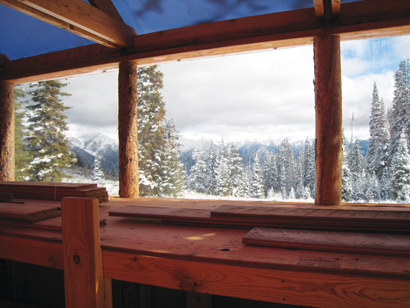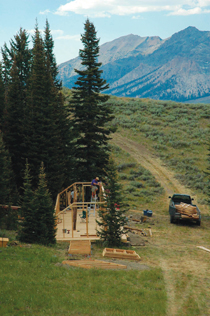| Current Issue |
| View as PDF |
| features |
|
Twenty
days of Fire |
| Moving a Mountain |
| Sun Valley Guides |
| arts |
|
Inside
the artist's studio: Eric Boyer |
|
CASTing
spells on stage |
| recreation |
|
Rising
from the ashes |
|
The
other cold war |
| dining |
|
Trout:
the secret of their success |
| regulars |
|
Valley
View: Sun Valley comes alive |
|
Chef's
Specialty: A winter warmer |
| calendar |
| Winter2008 |
| listings |
| Galleries |
| Dining |
| Luxury Living |
|
Outfitters/ Guides
& Equipment |
| Lodging |
| maps |
|
Ketchum
& Sun Valley |
| Gallery Map |
| the guide |
| Last Summer |
|
Last Spring-
Habitat |
| Last Fall |
| Contact Us |
| About Us |

|
|
Copyright © 2006 Express Publishing Inc. All Rights reserved. Reproduction in whole or in part in any form or medium without express written permission of Express Publishing Inc. is strictly prohibited. The Sun Valley Guide magazine is distributed free four times a year to residents and guests throughout the Sun Valley, Idaho resort area communities. Subscribers to the Idaho Mountain Express newspaper will receive the Sun Valley Guide with their subscription. |


Rising from the ashes
The rebuilding of Tornak Hut to be disabled accessible, creating the perfect backcountry escape for all, faced more than its fair share of challenges. Text by Scott Douglas.
Last year, acupuncturist Joan Scheingraber had the idea to make one of Sun Valleyís popular backcountry huts wheelchair accessible. Scheingraber, who has worked with adaptive athletes for 12 years, took her idea to Joe St. Onge of Sun Valley Trekking, owner of six of the areaís backcountry ski huts.

A troope of volunteers and donors helped turn Tornak Hut into a disabled-accessible backcountry destination. It included Matt Furber, Jim McClatchy, Gary Boyer, Dean Hernandez, Webb Landscaping, Ben Young, Nate Galpin, Houston Lumber, Building Materials Thrift Store, Nigel Whittington and family, Laura Higdon, Eric Boyer and Wendy Pabich.
Soon, the proposal for mere modifications turned into a plan to completely rebuild one of the huts north of Ketchum known as Tornak Hut. In collaboration with Sun Valley Adaptive Sports, Erik Schultz, executive director of the Arthur B. Schultz Foundation (an organization dedicated to supporting outdoor adventure opportunities for the disabled), cut a check to cover material costs for the rebuild.
Of the six huts, Tornak proved ideally situated for the undertaking. With summer road access, winter snow machine and snow cat access and a wealth of user-friendly terrain suitable for adaptive sports, itís the perfect backcountry escape.
Located near the headwaters of the East Fork of Baker Creek, the old Tornak (an Inuit word meaning spirit of the north) has stood proudly on the edge of a meadow through 25 severe winters, a testament to under-engineering. But it didnít take much to bring the structure down. A couple of hours of demolition, a few runs to the dump, and the old hut was history.
The project got off to a good start with plenty of volunteers willing and able to lend a hand and by mid-August the new hut was two-thirds built. New adaptive athlete-friendly features included a layout that provided sufficient flow for wheelchairs to get around in the hut, a ramp to the latrine, and architecture reminiscent of a Viking longhouse.
However, the timetable to complete the work was a tight one, and St. Onge was concerned. The East Fork road closes at the end of August, regardless of weather. Without a hitch, reconstruction could be completed by that time, but there were plenty of unknowns.
Enter the Castle Rock Fire.
When the wildfire blew up just west of Ketchum in mid-August, the first place it went was up Rooks Creek toward the headwaters of the East Fork of Baker Creek. In just one afternoon it burned to the flanks of Fox Peak, just a few miles from Tornak.
For over two weeks the fate of Tornak was in the hands of the shifting winds driving the Castle Rock Fire. But while the northern edge of the fire continued to burn, thankfully it never crossed the East Fork road. By the time the volunteers got back to the construction site to finish the job, it was mid-September.
A week later it snowed.
It was a cruel Indian summer that returned in late September, and snow lingered on the shady slopes. But the smoke was gone and the air was clear. A few more days was enough to complete the project.
Now, this backcountry paradise lies ready for its first sit-skier to relish a day carving up the powder, followed by an evening of rugged backcountry luxury.